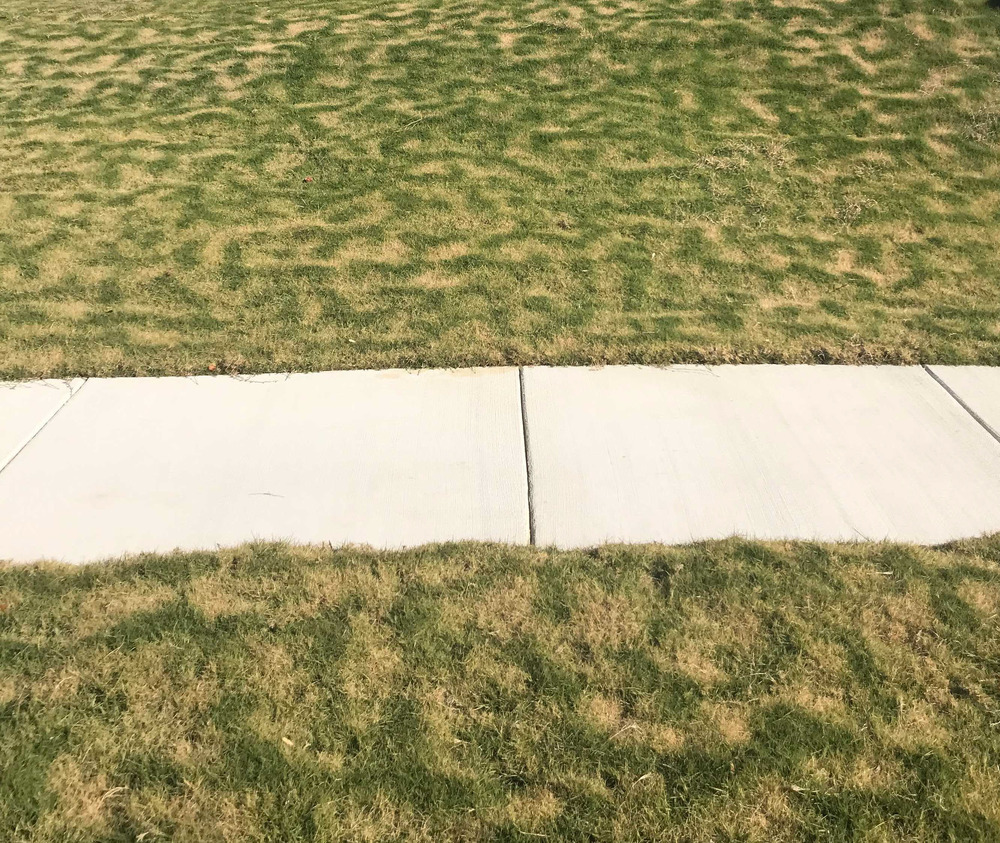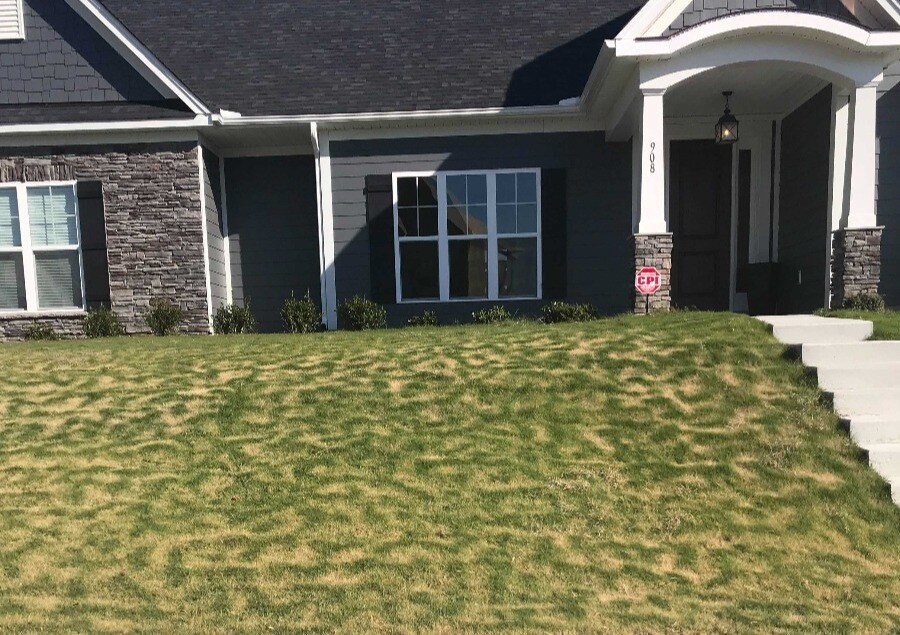

Wondering why you are seeing tiger or zebra stripes in your lawn? It is only temporary and nothing to be alarmed about.
Those weird patterns are not a sign of damage by disease or pests. It is only Jack Frost leaving his mark!
In just a few days the frost stripes will be gone. You will see no more signs of Jack Frost when your whole lawn is dormant and when the grass greens back up next spring you'll never know those tiger stripes were there.
Frosty fall nights can bring crazy patterns of frost stripes to warm-season lawns such as this TifTuf Bermudagrass.
Fall and First Frost
Fall is a time of transitions. As temperatures start to cool and the hours of daylight diminish, we see the seasonal changes in our yards. The trees put on a colorful show and leaves fall from the trees (make sure to rake them off your grass). The luscious green of warm-season lawns starts to fade (that's Bermuda, Zoysia, Centipede, and St. Augustine).
In autumn, our warm-season lawns begin the transition phase of going dormant (partially green and tan) and then fully turn tan-colored (light brown). The tan color of dormancy is quickly ushered in by the first few frosts of fall.
Jack Frost Trails
Sometimes the first cold night of fall brings a surprise!
Have you seen the interesting "trail" effects of Jack Frost on your lawn or in your neighborhood? If the conditions are just right, the frost will leave the most unusual zebra or tiger stripe patterns. It happens at our farms too! We simply call them "frost stripes."
Notice how the patch of grass below the sidewalk is still green, but on the other side, the frost caused strange patterns of green and tan frost stripes.
What Causes These Patterns?
Warm-season grasses are sensitive to freezing temperatures. In fall, there is an “in between” phase where the ground is still warm, yet the air has a rapid decrease in temperature. With the warm earth below and cool air above, there are different temperatures within the leaf blade canopy of your lawn, and air moves around through the blades.
Jack Frost trails happen if all these conditions are just right: grass height and density, warm ground temperatures, cold air (but not too cold), moisture content in the air and soil, and thermal air movement. Combined just right, these factors and the thermal currents they create mean that some parts of the lawn get frost burn and turn brown, while other parts stay just warm enough to avoid frost damage, and so they remain green.
That is why you might get tiger stripes, but your next-door neighbor doesn't. Or you could even see the effect in one part of your yard and not another. If the first frost occurs later in the season and the ground is colder, then the frost trails won't happen because the whole lawn will go dormant.
The professional term for frost trails, where different areas of grass go dormant before other areas, is "unsynchronized dormancy."
You won't see the squiggly lines of Jack Frost trails every year, but it is quite an interesting phenomenon when it does happen. Just rest assured that it is a very short-lived effect caused by the weather and is nothing to worry about.
So stay warm and cozy, safe and sound, because summer will be back with green grass all around.
These jack frost trails appeared in a field of TifTuf Bermuda at our farm in Laurinburg, NC. Photo by Michael Buckner, Super-Sod Farm Manager.





